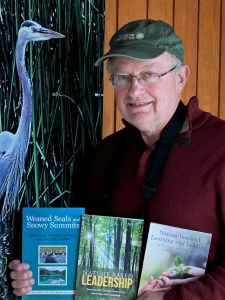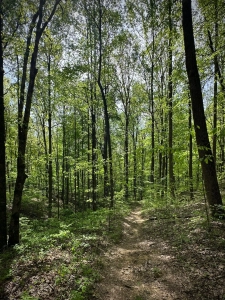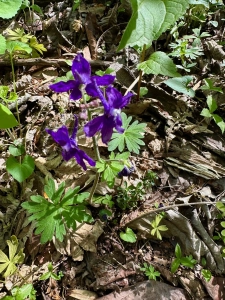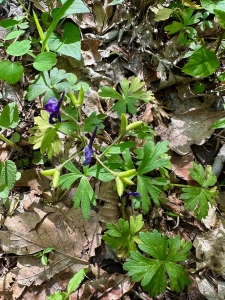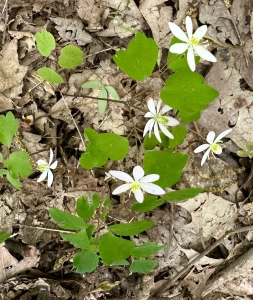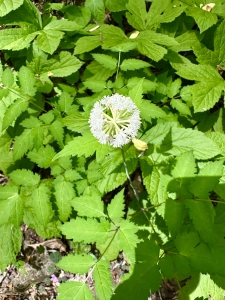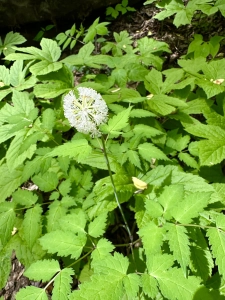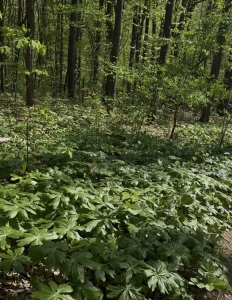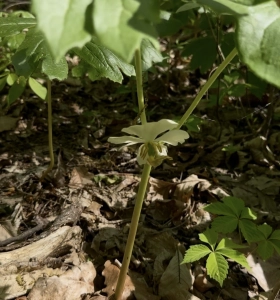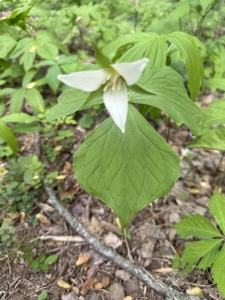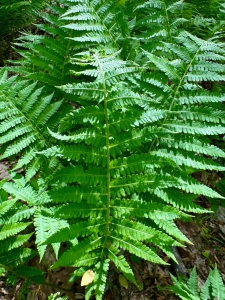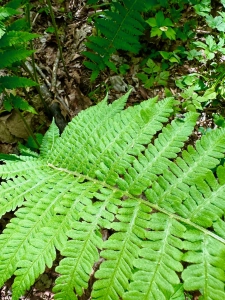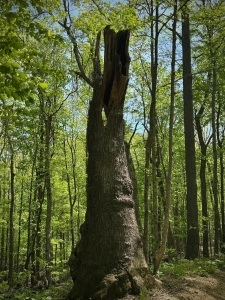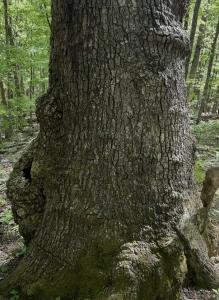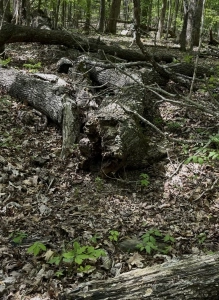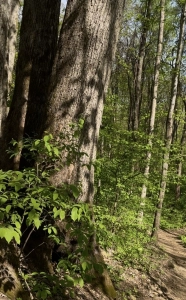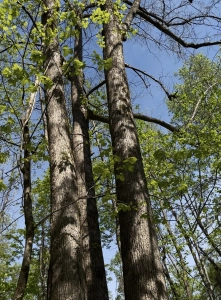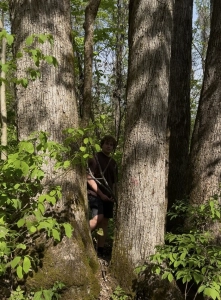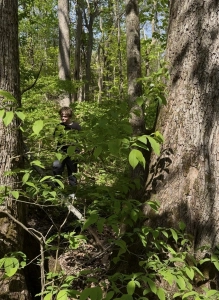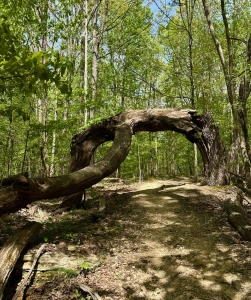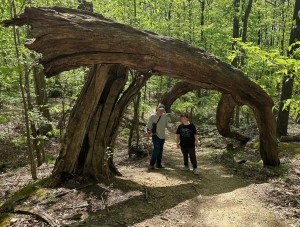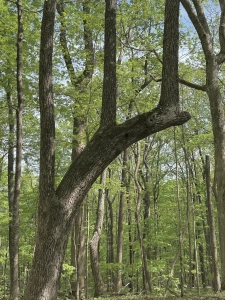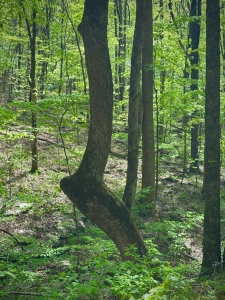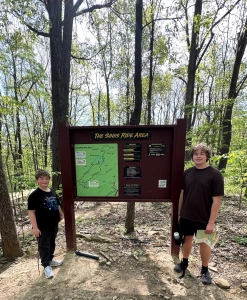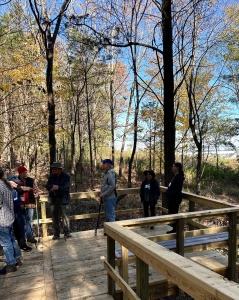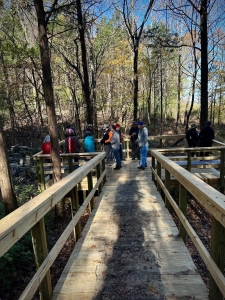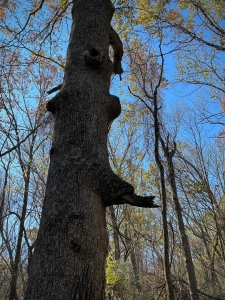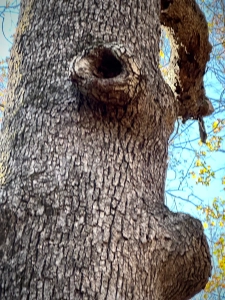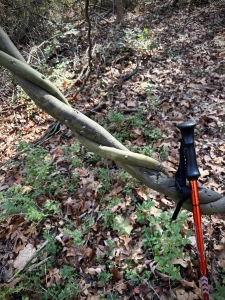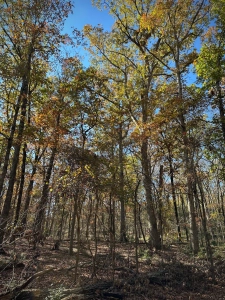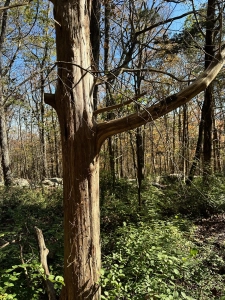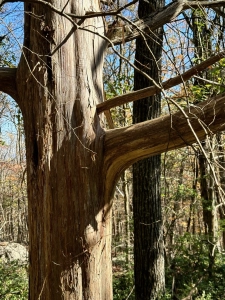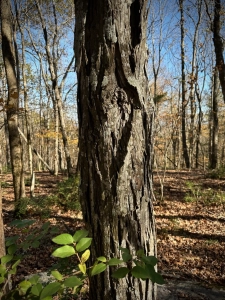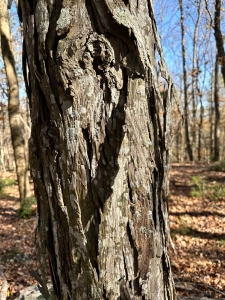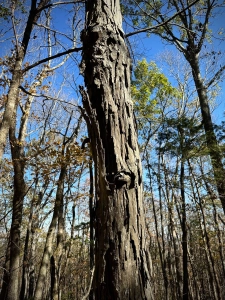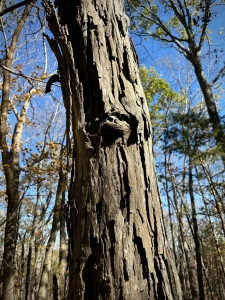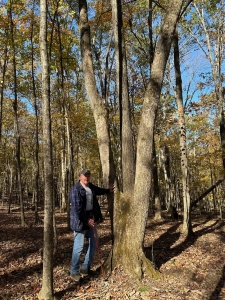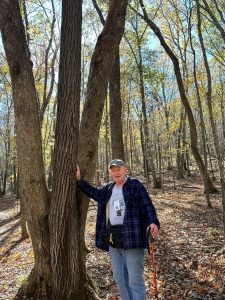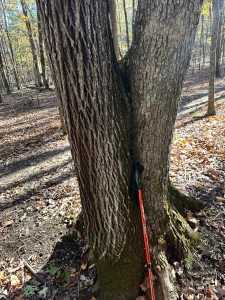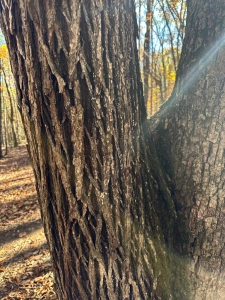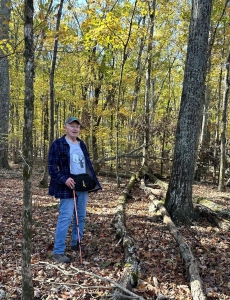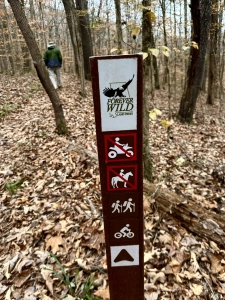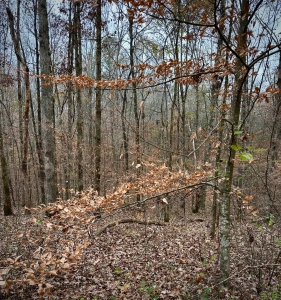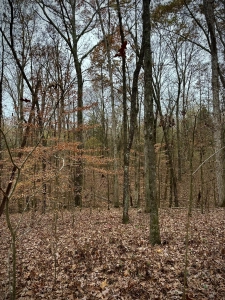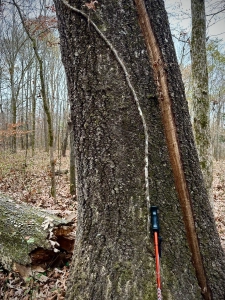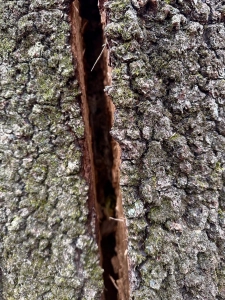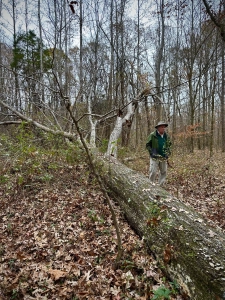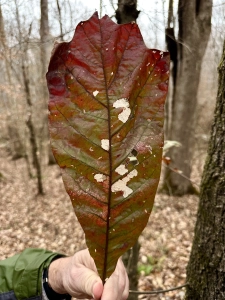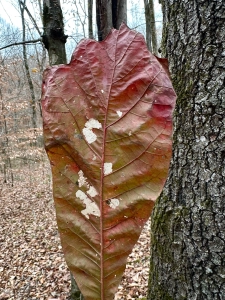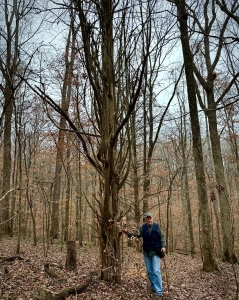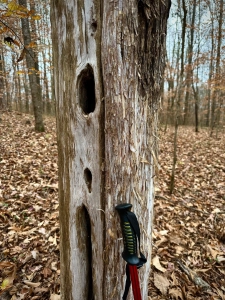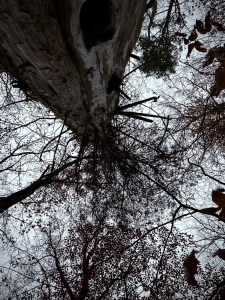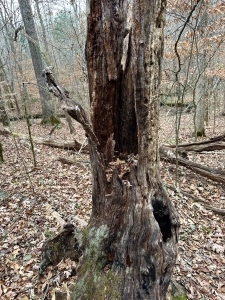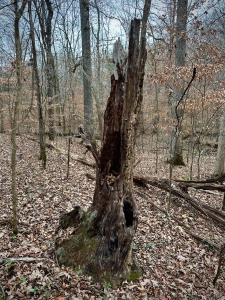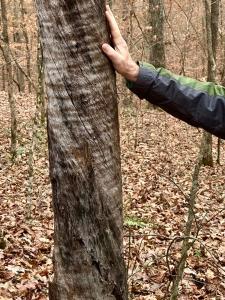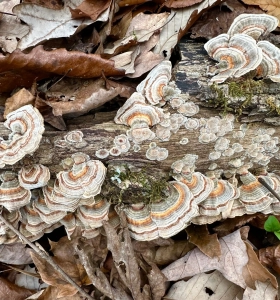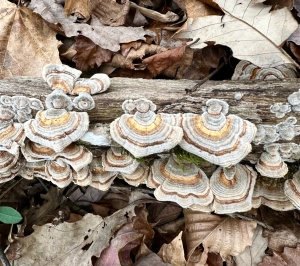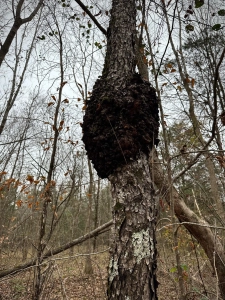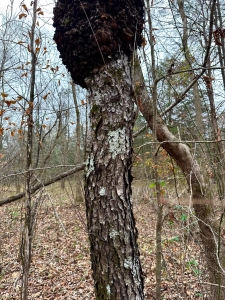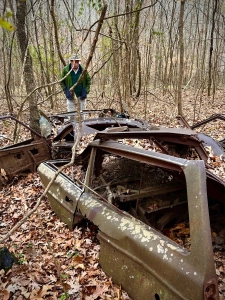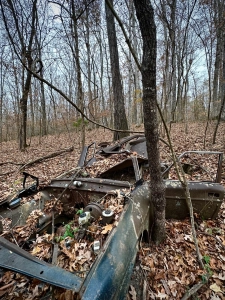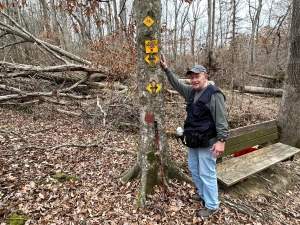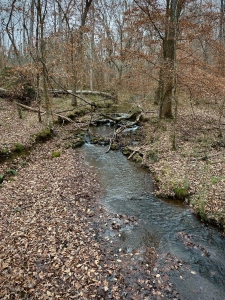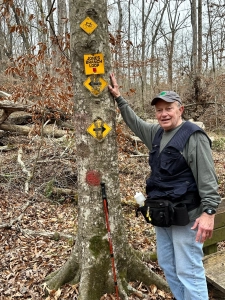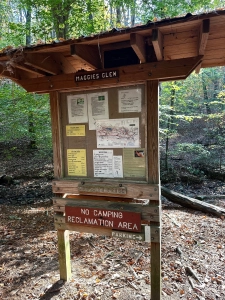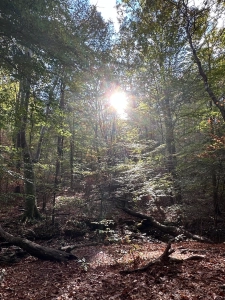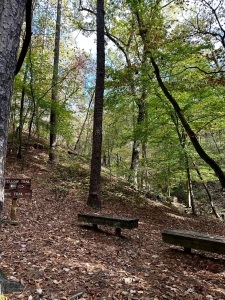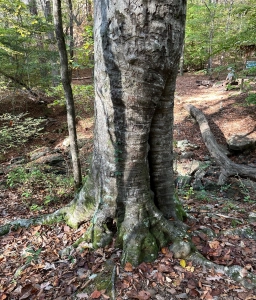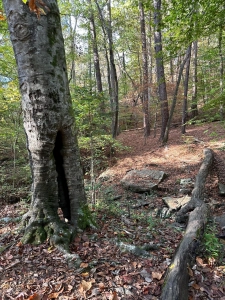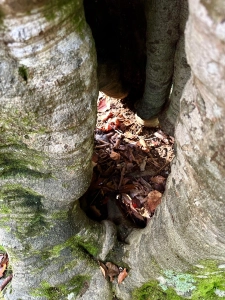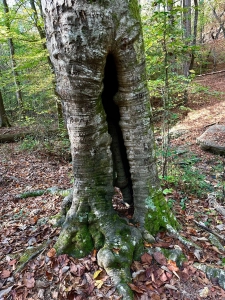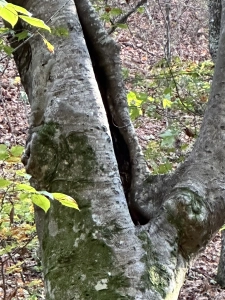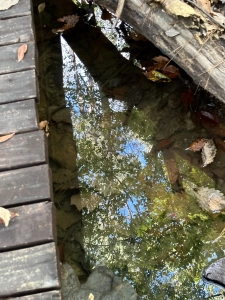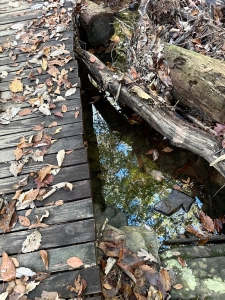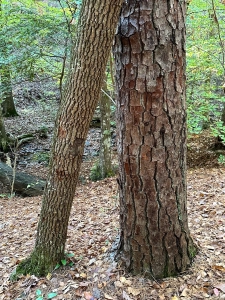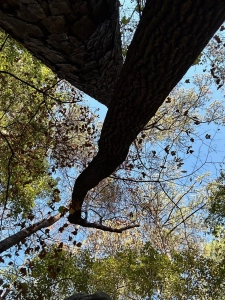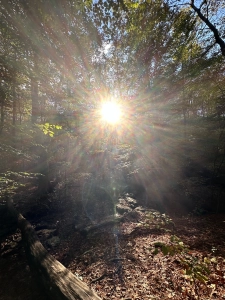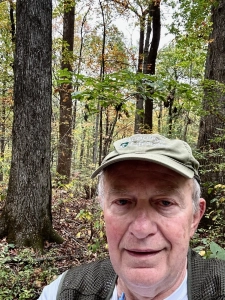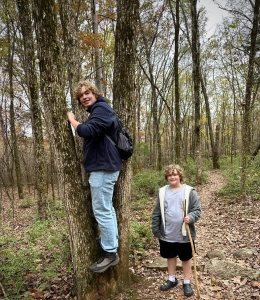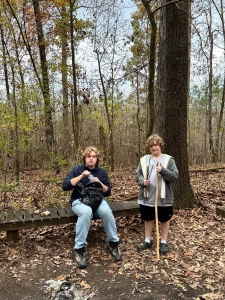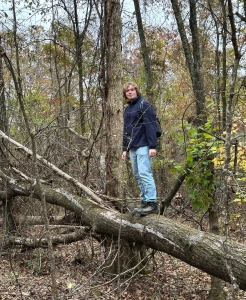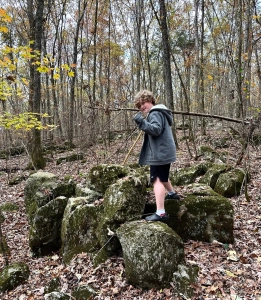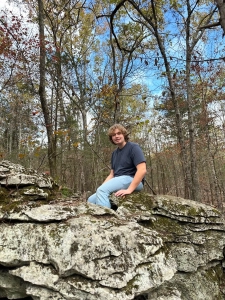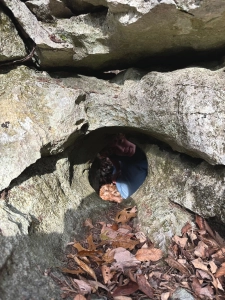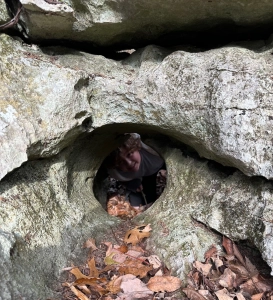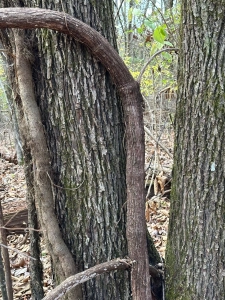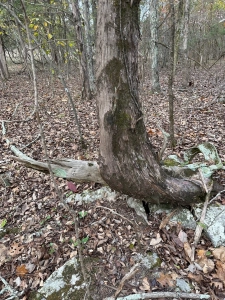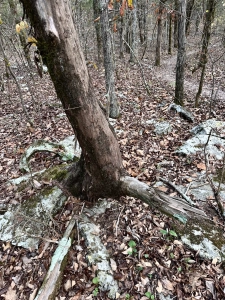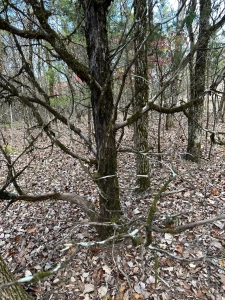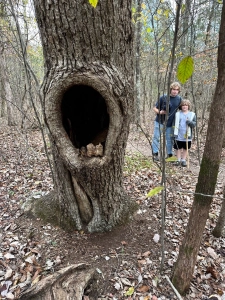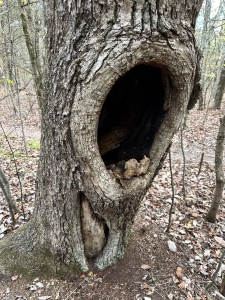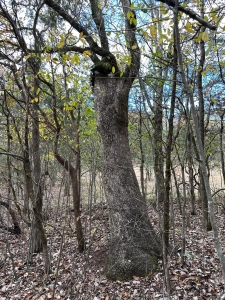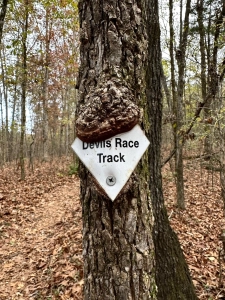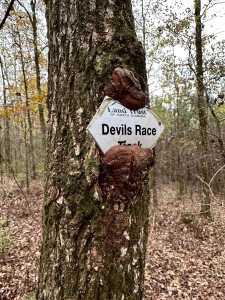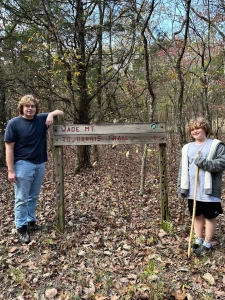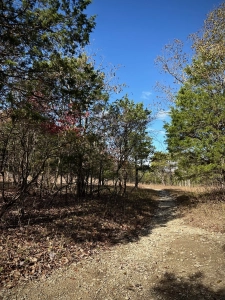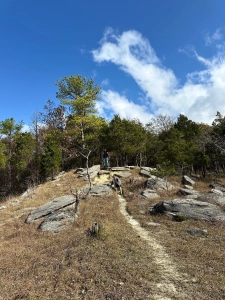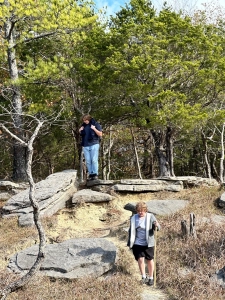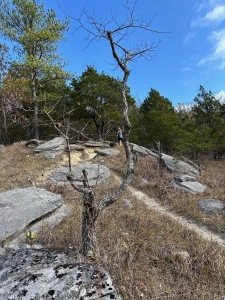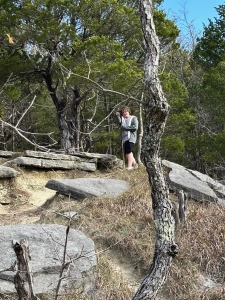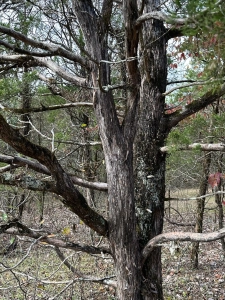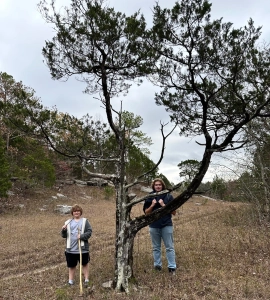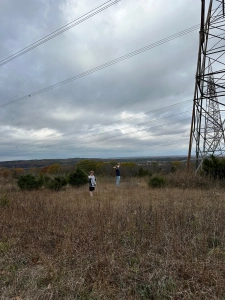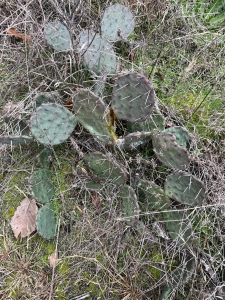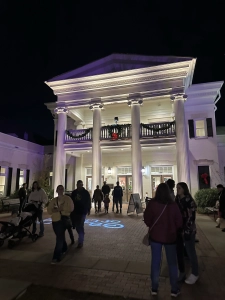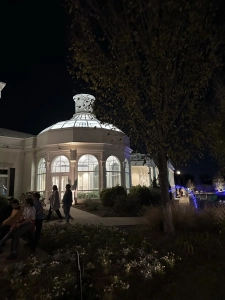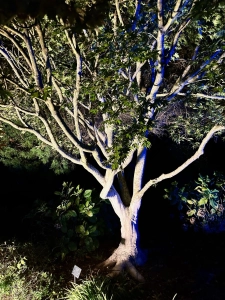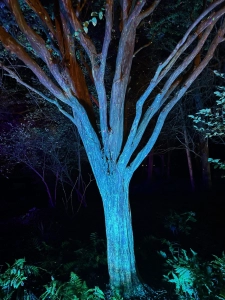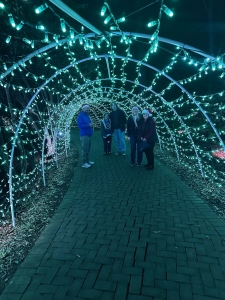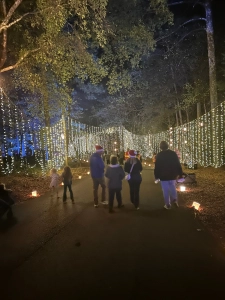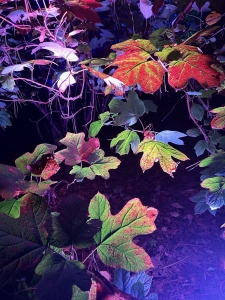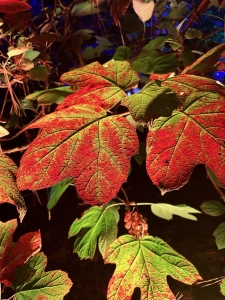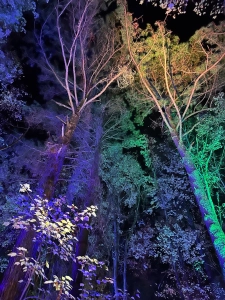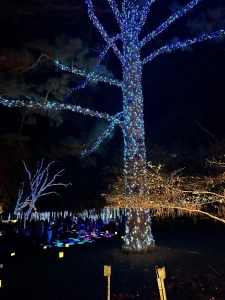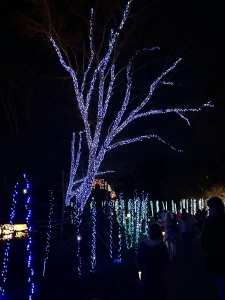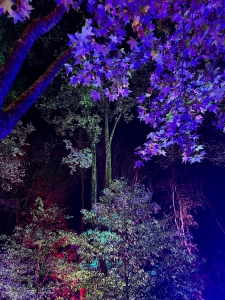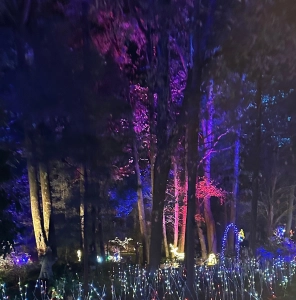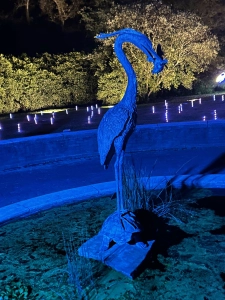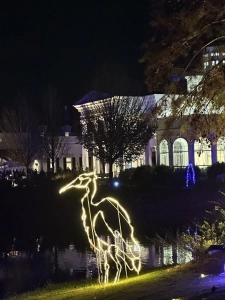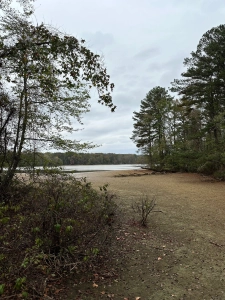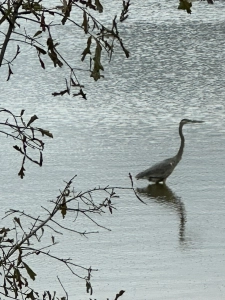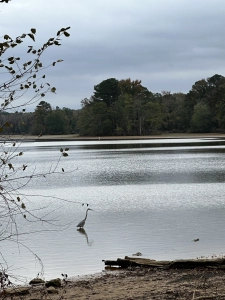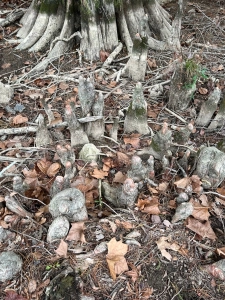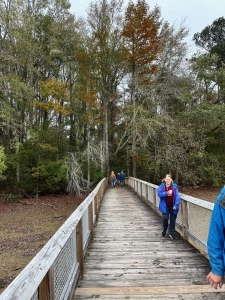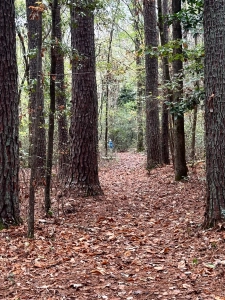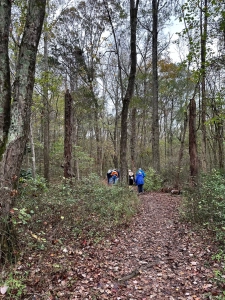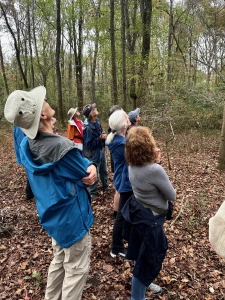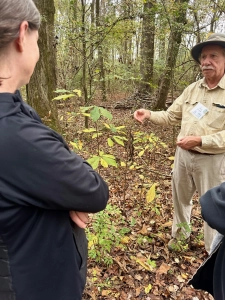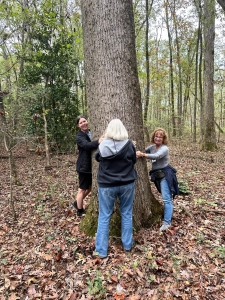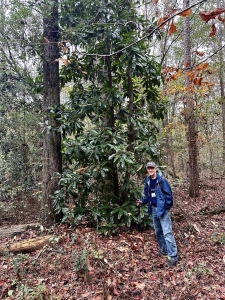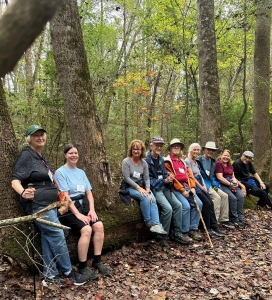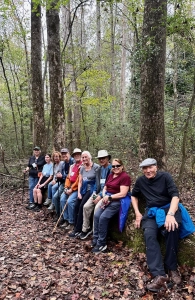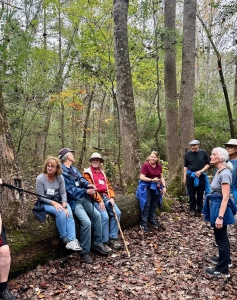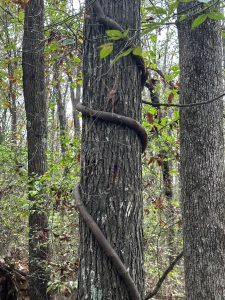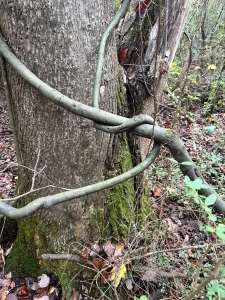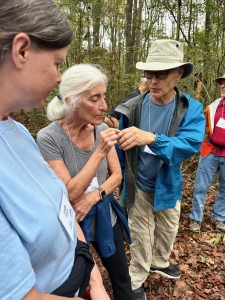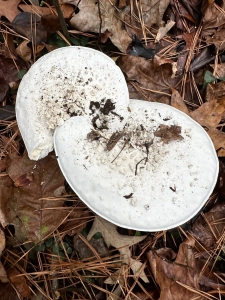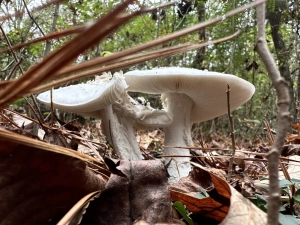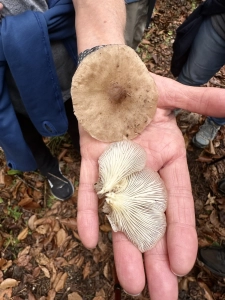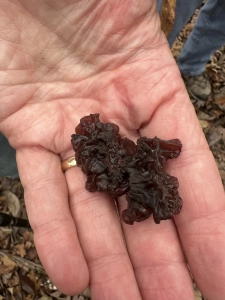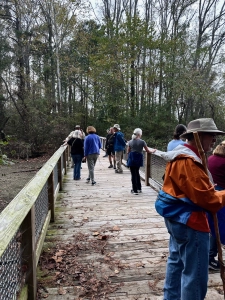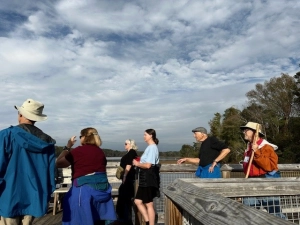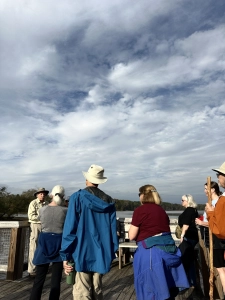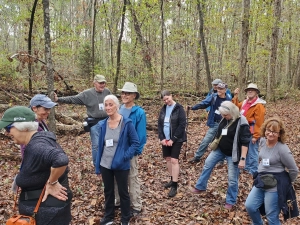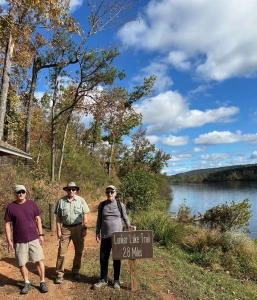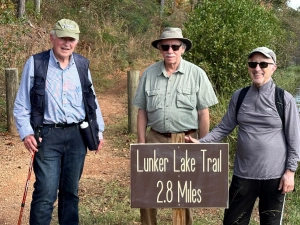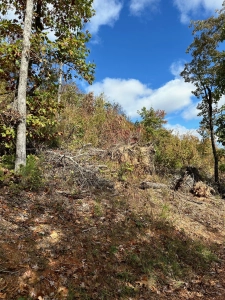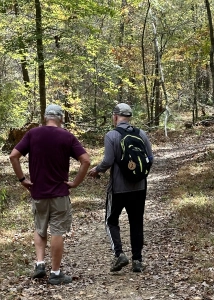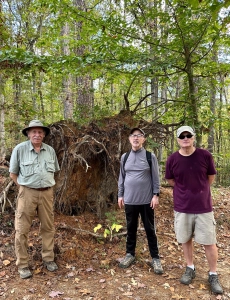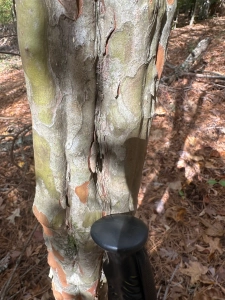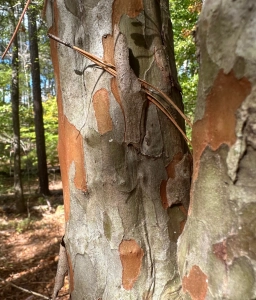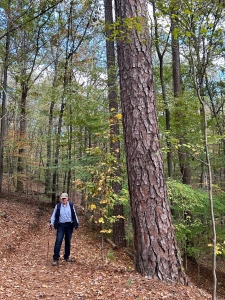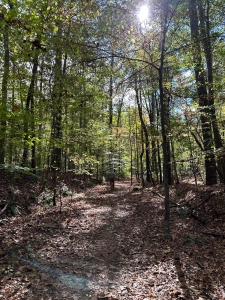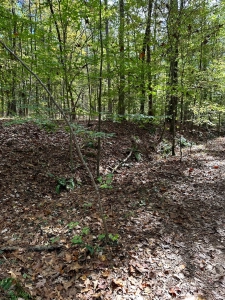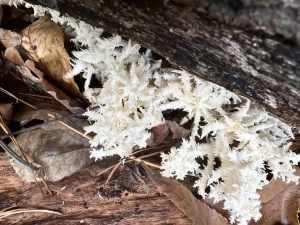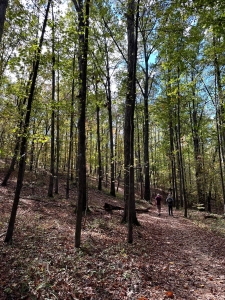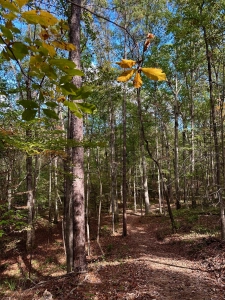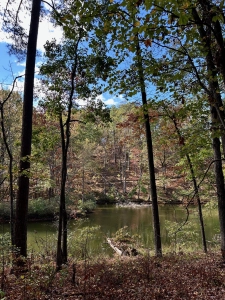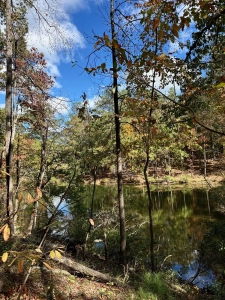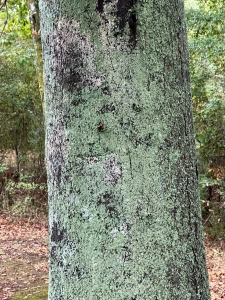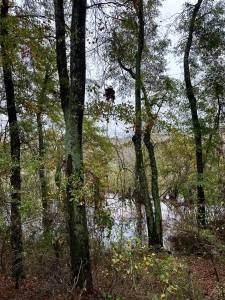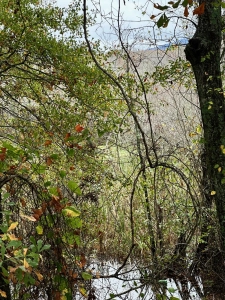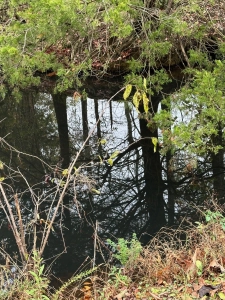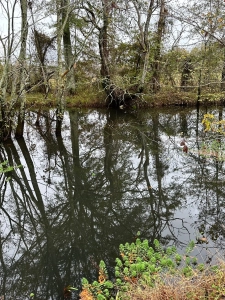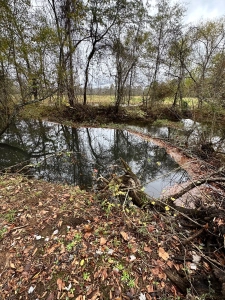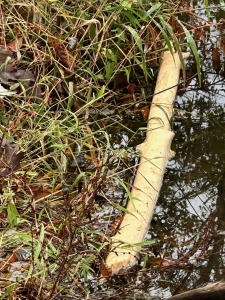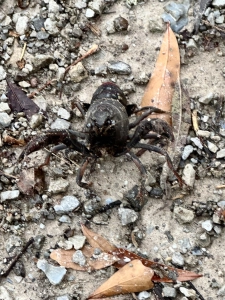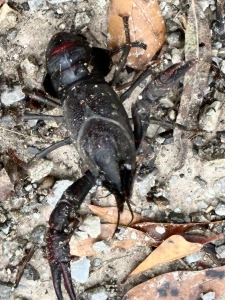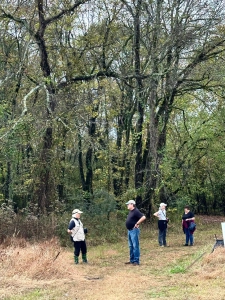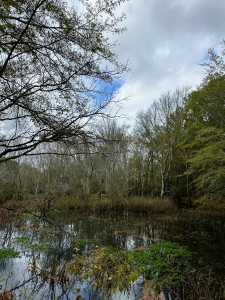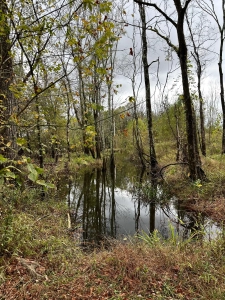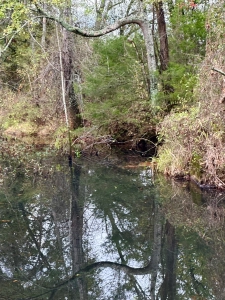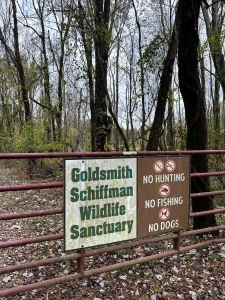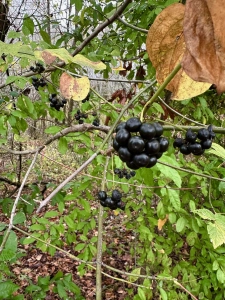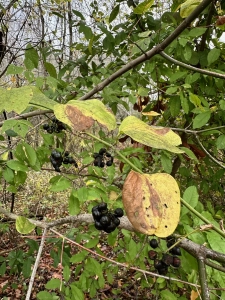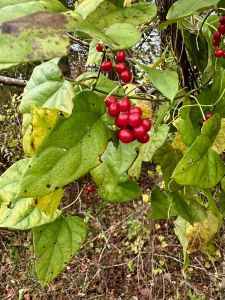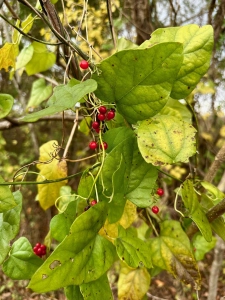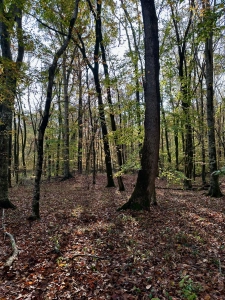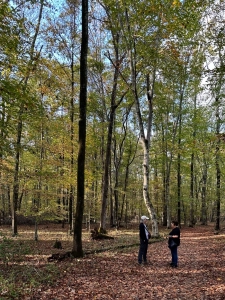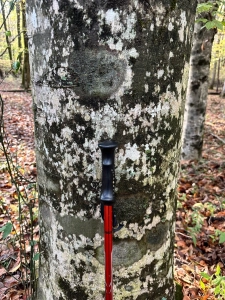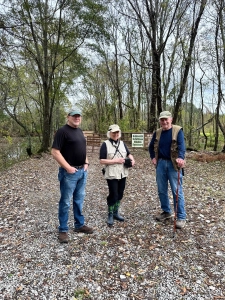Mid-August Morning at the Goldsmith-Schiffman Wildlife Sanctuary: A Great Blue Heron Encounter
[Note: I dedicate this Post to the memory of Charlie Kirk, a bold, courageous pioneer who tirelessly promoted a life of Faith in God’s merciful love, Patriotism, and Family. Two days after his assassination, his widow Erika said of Charlie: He loved nature, which always brought him closer to God. I echo those sentiments. Nature never fails to bring me closer to God.]
On August 15, 2025, fellow retired forester Chris Stuhlinger and I explored the western reaches of Huntsville’s Goldsmith-Schiffman Wildlife Sanctuary, a special place I’ve visited dozens of times since retiring to northern Alabama. I come back again and again, not to see the same thing, but to observe a universe of things that change minute by minute, hour by hour, day by day, and across the seasons and years. Take a walk with Chris and me to see some things that will never look exactly the same again. Nothing in Nature is static; special places offer infinite treats to those of us who seek them.
David George Haskell, professor of biology at the University of the South, published The Forest Unseen: A Year’s Watch in Nature (2012). From the back cover:
Visiting a one-square-meter patch of old-growth Tennessee forest almost daily for one year, biologist David Haskell traces nature’s path through the seasons and brings the forest and its inhabitants to vivid life. Beginning with simple observations — a salamander scuttling across the leaf litter; the first blossoms of spring wildflowers — Haskell spins a brilliant web of biology, ecology, and poetry. He explains the science that binds together the tiniest microbes and the largest mammals, and describes the ecosystems that have cycled for thousands — sometimes millians — of years. Written with remarkable grace and empathy, The Forest Unseen is a grand tour of nature in all its beauty and complexity.
Such is my mindset when I repeatedly visit the sanctuary, touring its 400 acres in all of its beauty and complexity.
Mid-Summer Morning Trek from Hidden Spring to Jobala Pond
Most of its infinite treats are hidden in plain sight, requiring only that we get into the out there from time to time, and that we understand enough of Nature to know how and where to look. Hidden Spring rises within a hunrdred feet of the Taylor Road entrance. Luxuriously vegetated with wetland trees, shrubs, and herbs, the marsh below the spring widens to several hundred feet. Heavy overcast, moistened air, and foliage still dripping from a morning shower set the other-world mood. I imagined an Old World fen.
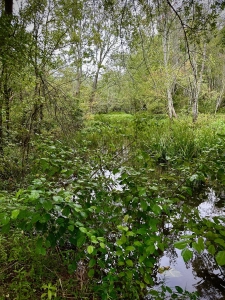
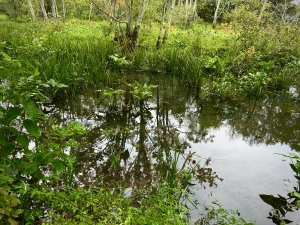
We observed the transition from wide marsh to Hidden Spring Brook, the channel that extends through a series of beaver dams into Jobala Pond, and eventually the Flint River.
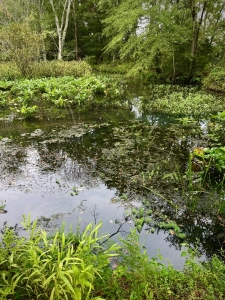
I recorded this 60-second video of what I termed on that special morning, an other-world marsh.
Clear water reflected the cloudy sky and overhead branches, amplfying the other-world mood.
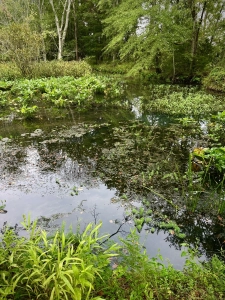
Beaver enjoy the tasty and nutritious leaves, bark and cambium of native hardwood trees, stripping branches and stems, and then employing the stripped stems to repair and reinforce their structures.
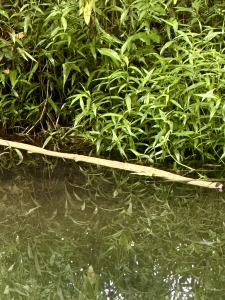
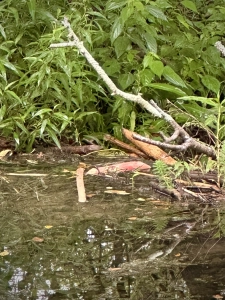
This dam held back 15-18 inches of ponded water. Excuse the pun: beavers are dam-good engineers!
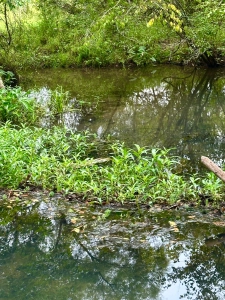
I’ve told the story of Jobala Pond many times. Human road engineers mined sand, clay, and gravel from the area to construct Route 431 in the 1950s, creating a borrow pit, a barren excavated depression accepting, holding, and then releasing the flow from Hidden Spring. Nature is remarkably resilient, superbly adept at healing her own wounds as well as convalescencing human insults to the land. The old borrow pit has naturalized over eight decades.
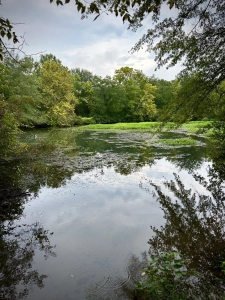
We found a puzzling phenomenon, 100-feet from the shore and out of our reach, on the upstream section of Jobala Pond. Two clearly living red maple trees (Acer rubrum), standing in water, called out to us with a pinkish circumferential ring 2-4″ immediately above the water line. I magnified the image up to the limits of resolution clarity, showing the fibrous nature of the feature. I shared via social media, generating speculation. Chris and I agree with several persons who suggested that the trees, attempting to survive the saturated soil environment, sprouted air roots above the water for supplemental aeration.
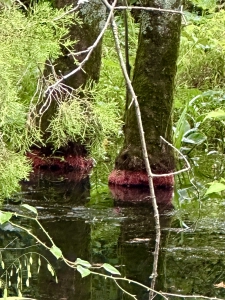
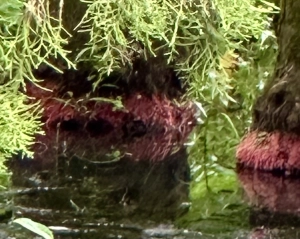
Chris and I plan to return with either a canoe or waders to more closely examine the mysterious growth.
Here are two more images of the richly-vegetated upper end of Jobala.
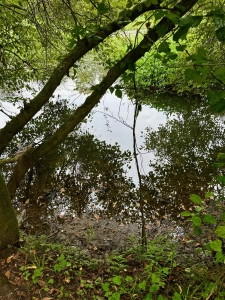
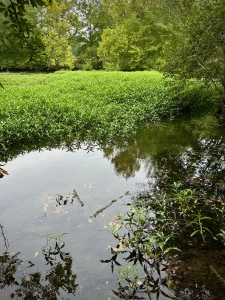
I hope that you agree that this is a special place.
My Avatar: Great Blue Heron
The great blue heron is the totem for my Dad, who passed away in 1996. The heron appeared as an avatar at sunrise on the frigid morning of Dad’s memorial service. Look for the story on my website. I consider every sighting of a great blue heron as Dad checking on me. He lives within me.
A heron passed noiselessly as Chris and I stood at Jobala. He (my sentimental assumption of gender) alighted beyond the pond’s outlet. We stalked the bird to within camera range.

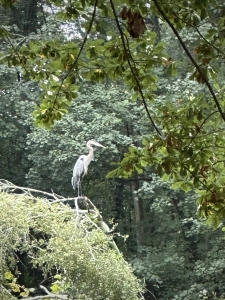
I recorded this 50-second video when I dared not get closer.
The video and photos are not magazine-worthy, but they are soul-value priceless to me.
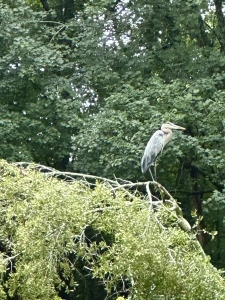
Again, all special places bless us with infinite treats.
Seasonal Flora
I give you some of the special floral delights we noted along our summer morning route, with no more narration than necessary. A red buckeye carries ripe fruit, its glossy fruit still within its husk.
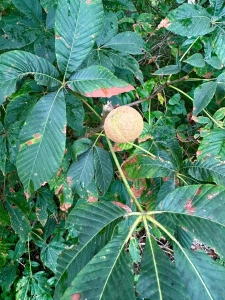
Elderberry in full ripe fruit.

Trumpet vine sporting its late summer bugles.
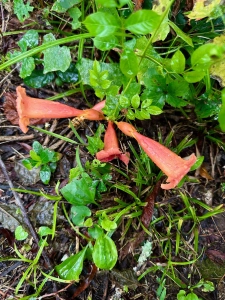
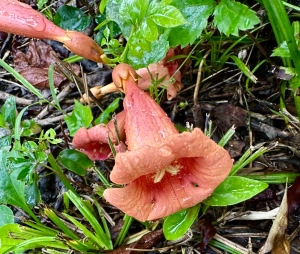
Delicate partridge pea and sensitive pea.
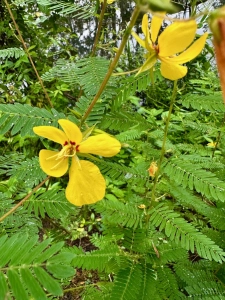
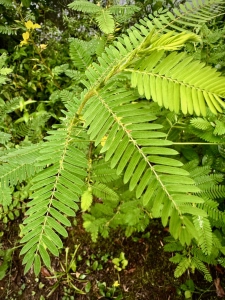
Sensitive fern.
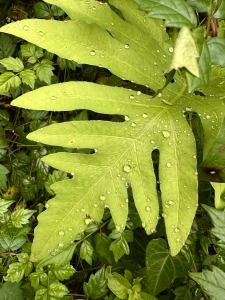
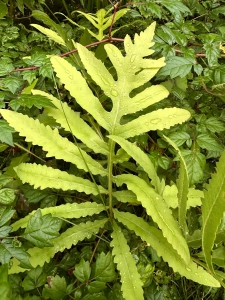
Tall ironweed.
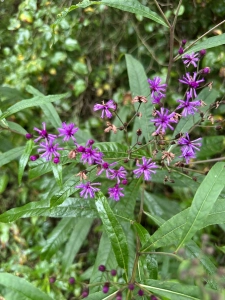
Wild hibiscus.
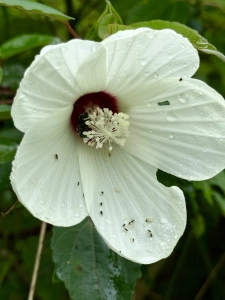
I’ve begun to lose my bias for spring wildflowers; these late sumer beauties are hard to beat!
Nature spins a brilliant web of biology, ecology, and poetry.
Area’s Native American Presence: Archaeology and Anthropology at GSWS
I won’t devote more than a few sentences to these two images. Chris and I took advantage of our need to be on-site for a session to discuss the Native American archaeology and anthropolgy on the property with noted local archaeologist Ben Hoksbergen. Marian Moore Lewis, author of Southern Sanctuary, Bill Heslip, director of a 13-minute video about the Sanctuary, and Bill’s wife Becky gathered for a couple hours with us at a picnic table near the entrance. We made plans to visit pertinent sites on the Sanctuary when cooler weather arrives.
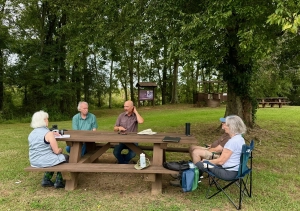
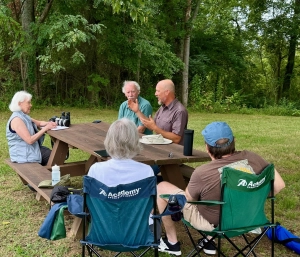
Watch for updates in a subsequent Post.
Thoughts and Reflections
I offer these observations:
- Every walk in Nature can be a grand tour of her beauty and complexity. (Steve Jones)
- Look deep into Nature, and then you will understand everything better. (Albert Einstein)
- Nothing in Nature is static; special places offer infinite treats to those of us who seek them. (Steve Jones)
- He loved nature, which always brought him closer to God. (Erika Kirk)
Inhale and absorb Nature’s elixir. May Nature Inspire, Inform, and Reward you!
Note: Unless otherwise noted, all blog post images are created & photographed by Stephen B. Jones.
I am available for Nature-Inspired Speaking, Writing, and Consulting — contact me at steve.jones.0524@gmail.com
A reminder of my Personal and Professional Purpose, Passion, and Cause
If only more of us viewed our precious environment through the filters I employ. If only my mission and vision could be multiplied by untold orders of magnitude:
Mission: Employ writing and speaking to educate, inspire, and enable readers and listeners to understand, appreciate, and enjoy Nature… and accept and practice Earth Stewardship.
Vision:
- People of all ages will pay greater attention to and engage more regularly with Nature… and will accept and practice informed and responsible Earth Stewardship.
- They will see their relationship to our natural world with new eyes… and understand their Earth home more clearly.
Tagline/Motto: Steve (Great Blue Heron) encourages and seeks a better tomorrow through Nature-Inspired Living!
Steve’s Four Books
I wrote my books Nature Based Leadership (2016), Nature-Inspired Learning and Leading (2017), Weaned Seals and Snowy Summits: Stories of Passion for Place and Everyday Nature (2019; co-authored with Dr. Jennifer Wilhoit), and Dutton Land & Cattle: A Land Legacy Story (2025) to encourage all citizens to recognize and appreciate that every lesson for living, learning, serving, and leading is either written indelibly in or is powerfully inspired by Nature. All four of my books present compilations of personal experiences expressing my deep passion for Nature. All four books offer observations and reflections on my relationship with the natural world… and the broader implications for society. Order any from your local indie bookstore, or find them on IndieBound or other online sources such as Amazon and LifeRich.
I began writing books and Posts for several reasons:
- I love hiking and exploring Nature
- I see images I want to (and do) capture with my trusty iPhone camera
- I enjoy explaining those images — an educator at heart
- I don’t play golf!
- I do love writing — it’s the hobby I never needed when my career consumed me
- Judy suggested my writing is in large measure my legacy to our two kids, our five grandkids, and all the unborn generations beyond
- And finally, perhaps my books and Blogs could reach beyond family and touch a few other lives… sow some seeds for the future
